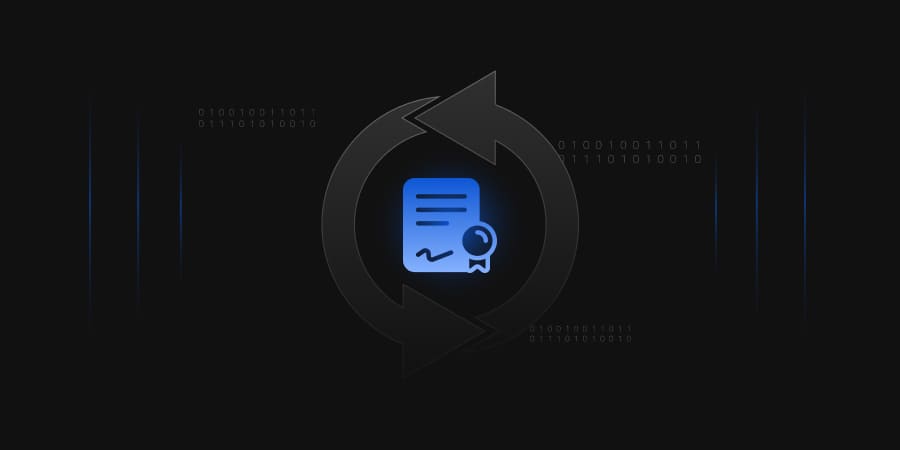Introduction
Microservices have become the go-to way to build modern applications. Instead of one big application doing everything, you’ve got dozens (or even hundreds) of smaller services talking to each other over the network. This setup is great for scaling and flexibility, but it also opens up a lot of room for trouble, especially when it comes to how those services communicate.
Most people are familiar with TLS, which is what puts the lock icon in your browser. It encrypts traffic and keeps outsiders from snooping. But in microservices, traditional TLS isn’t enough. TLS usually authenticates just the server, not the client. That’s fine for browsing websites, but in a microservices environment, each service acts as both a client and a server, and they all need to verify who they’re talking to. That’s where mutual TLS (mTLS) comes in.
With mTLS, both ends of the connection present certificates to prove their identity. Think of it like a secret handshake; each service has to show its credentials before the conversation can begin. This mutual verification helps ensure that no unauthorized or rogue service can sneak into the system pretending to be something it’s not.
This is especially important for what’s called East-West traffic, the communication happening between services inside your environment (as opposed to North-South traffic between users and your app). Without encryption and identity checks, it’s all too easy for attackers to intercept traffic, impersonate services, or tamper with data-in-transit.
By adding mTLS into the mix, you’re not just encrypting the data; you’re also making sure that only trusted services are allowed to talk to each other. That means more secure communication, fewer security holes, and a much better foundation for zero trust across your microservices setup.
Understanding mTLS in Service Mesh Architecture
When you’re dealing with microservices that need to talk to each other, wiring up secure communication between every single one manually gets messy fast. That’s where service meshes like Istio, Linkerd, or Consul step in. They handle things like traffic routing, retries, and most importantly, security between services without forcing developers to hardcode logic into their apps.
So, how does mTLS actually fit into a service mesh? It all starts with something called a Sidecar Proxy. Most service meshes inject a small proxy like Envoy next to each service. Instead of services talking directly to one another, all traffic goes through these proxies. That gives the mesh control over the traffic, including how it’s encrypted and authenticated.
Here’s where mTLS kicks in. Each sidecar proxy gets its own certificate, and when two services need to talk, their sidecars handle the secure connection. The proxies swap certificates, check each other’s identity, and set up an encrypted channel before any data is exchanged. The services themselves don’t need to worry about any of this; the mesh takes care of it.
Sounds great, right? But it’s not all smooth sailing. mTLS certificates have short lifespans, especially in high-security environments. That means they need to be issued, renewed, and sometimes revoked regularly. If a certificate expires or is compromised, it can break communication or expose sensitive data. Doing all this manually or even semi-manually just doesn’t scale. And when something breaks, figuring out which cert caused the issue can be a nightmare.
That’s why automated certificate management becomes such a big deal in service mesh setups. Without it, mTLS can become more of a hassle than a help.
Why Manual mTLS Management Doesn’t Scale
In theory, using mTLS across your microservices sounds like a solid plan: encrypt everything, authenticate everything. But in practice, managing all those certificates by hand is a real headache, especially once things start to grow.
In a setup like Kubernetes, services are constantly spinning up, shutting down, scaling out, or getting redeployed. That means the certificates that those services rely on also need to be short-lived and refreshed frequently. It’s not like you can hand out a cert and forget about it for a year. We’re talking lifespans measured in days or even hours.
Now imagine trying to manually issue, distribute, and rotate certificates for every one of those services. One missed renewal, and suddenly, your services stopped talking to each other. That turns into outages, angry alerts, and a lot of time wasted chasing down expired certs.
It also puts extra pressure on developers and SREs who’d rather focus on building and maintaining reliable systems, not babysitting certificate lifecycles. Managing mTLS manually at scale is like trying to keep a hundred spinning plates from falling. It’s doable, sure, but eventually, something’s going to break.
And when it does, it’s not just an inconvenience. It’s a security risk. A compromised service with an outdated or unmanaged certificate might still be trusted by others if revocation isn’t handled properly. That opens the door to lateral movement, spoofing, and other types of attacks you thought mTLS was supposed to protect against.
The truth is, as your environment grows, manual certificate management just can’t keep up. It slows you down, makes things brittle, and turns mTLS from a security feature into a source of pain.
How CertSecure Manager Will Help You
This is where our CertSecure Manager comes in.
CertSecure Manager is built to take the pain out of managing mTLS certificates in modern, fast-moving environments. Instead of relying on manual steps, patchy scripts, or last-minute Slack alerts about expiring certs, our platform handles everything behind the scenes, issuing, renewing, rotating, and revoking certificates automatically.
It fits right into setups that follow a zero-trust model, where every service needs to prove its identity before talking to anything else. Our platform helps enforce that by making sure every service has a valid, short-lived certificate, without requiring your team to get involved every time something changes.
Our CertSecure Manager was designed with cloud-native platforms in mind. It works smoothly with Kubernetes and connects with secret managers like HashiCorp Vault or your internal PKI. Whether you’re using a built-in mesh Certificate Authority or plugging into an external one, our platform can handle it.
The idea is simple: your services keep moving, scaling, and deploying, and our platform keeps their identities secure without slowing anything down. No guesswork, no expired certs, no surprise outages. Just automated certificate management that actually keeps up.
How CertSecure Manager Streamlines mTLS in Service Meshes
Our CertSecure Manager was built to do one job really well: make mTLS in service meshes something you don’t have to think about. It takes care of the messy parts of certificate management so your services can stay secure without constant handholding. Here’s how it works:
Automated Certificate Provisioning for Services
As new services come online, our platform talks to your orchestrator or service registry to figure out who they are and what they need. It then automatically issues identity-bound certificates tied to that specific service instance. No ticket queues, no copy-pasting from a CA, no delays. The moment a service is ready, it gets its cert and can start communicating securely.
Zero-Touch Certificate Renewal and Rotation
Short-lived certs are great for security, but a nightmare if you have to babysit them. Our platform keeps track of expiry dates and rotates certificates well before they expire. Everything happens in the background: no restarts, no downtime, and no surprises during a Friday evening deployment. Your services stay trusted without anyone needing to log in and do it manually.
Centralized Visibility and Policy Enforcement
With our platform, you get a single place to see what’s going on. You can track which services have which certificates, when they expire, and whether they follow your rules. Want to enforce a 90-day validity limit? Prefer 4096-bit keys? Our CertSecure Manager lets you set those policies once and makes sure every cert follows them automatically.
Fast Revocation for Compromised Services
If something goes wrong, like a service gets compromised or starts behaving strangely, you can revoke its certificate immediately through our platform. It doesn’t stop there: our CertSecure Manager can also trigger a sidecar reload or redeploy the pod to make sure the new certificate is picked up cleanly. No gaps, no leftover trust hanging around.
Benefits of Using CertSecure Manager for mTLS in Microservices
Managing mTLS the old-fashioned way, scripts, spreadsheets, or tribal knowledge—just doesn’t hold up when your microservices start multiplying. Our CertSecure Manager makes things simpler, faster, and a whole lot safer. Here’s what you get out of the box:
- Reduced Operational Overhead: No more chasing expiring certificates, debugging broken mTLS handshakes, or waking up at 2 a.m. to restart services. Our platform automates the whole process so your teams can stop worrying about certs and focus on shipping features.
- Faster Deployments with Secure Defaults: Our platform helps you bake security right into your workflows. As new services spin up, they get valid certs with the right policies, no manual steps, no guesswork. That means you can move faster without cutting corners.
- Improved Visibility and Compliance Posture: Need to show which services have valid certs? When do they expire? What algorithms do they use? Our platform gives you a clean, central view of all that. It also helps you stick to internal security rules without needing a weekly audit scramble.
- Seamless DevOps Integration: Our platform plays well with your existing DevOps stack. Whether you’re using CI/CD pipelines, GitOps, Helm charts, or something else, CertSecure Manager can plug right in and handle certs automatically as part of your deployments. It’s security that fits into your workflow, not the other way around.
Conclusion
mTLS is essential if you want secure communication between services, especially in dynamic, containerized environments. But keeping track of certificates, manually issuing them, renewing them, and revoking them isn’t just tedious, it’s risky. One missed cert can break everything or worse, open the door to an attack.
Our CertSecure Manager was built to solve this exact problem. It takes the pain out of certificate lifecycle management by automating the entire process from provisioning to revocation without slowing your teams down. Whether you’re running on Kubernetes with Istio and Envoy, integrating with Vault, or managing your own internal PKI, our platform makes mTLS easy, reliable, and hands-off.
If your microservices are growing and you’re still managing certs by hand, it’s time for a change. Let our CertSecure Manager keep your services trusted, your traffic encrypted, and your teams focused on what really matters—building great software.




